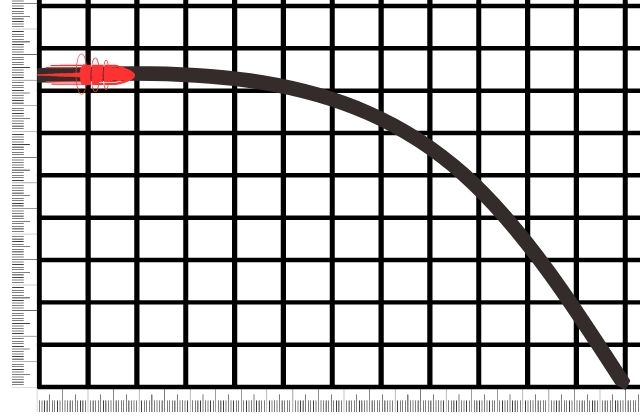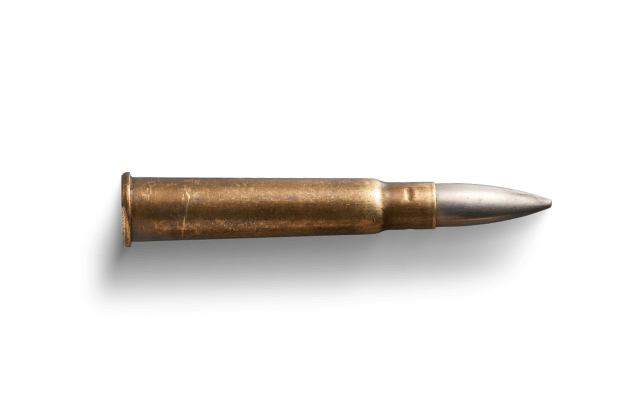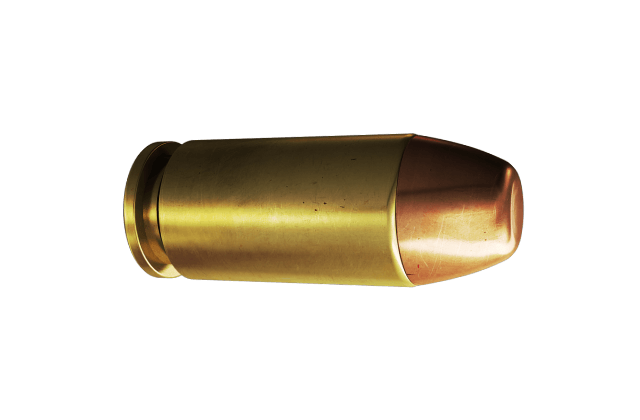This site contains affiliate links. As an Amazon Associate, I earn a commission from qualifying purchases at no extra cost to you. Full Disclosure Here.
When it comes to shooting accurately over long distances, there are many factors to consider, from bullet weight and velocity to wind speed and direction.
One key factor that is often overlooked, but can significantly affect accuracy and effectiveness, is the ballistic coefficient (BC) of the bullet being used.
Ballistic coefficient is a measure of a bullet’s ability to overcome air resistance as it travels through the air and is determined by factors such as the bullet’s mass, shape, and size. Simply put, a bullet with a high BC will maintain its velocity and energy better than one with a low BC, which is essential for accuracy and consistency at longer ranges.
Understanding and utilizing the ballistic coefficient can help shooters achieve better accuracy and effectiveness at long ranges, making it an essential concept for anyone serious about precision shooting.
In this blog post, we will explore the importance of ballistic coefficient in detail, examining how it is calculated, how it affects bullet performance, and why it matters for different shooting scenarios.
What Is Ballistic Coefficient?
Ballistic coefficient (BC) is a measure of a projectile’s ability to maintain its velocity and overcome air resistance as it travels through the air. It is defined as the ratio of a bullet’s sectional density to its coefficient of form, which takes into account its shape and aerodynamic characteristics.

A high BC indicates that a projectile is more streamlined and will retain its velocity better, resulting in a flatter trajectory and less drop over distance. This makes it more accurate and effective at longer ranges. In contrast, a low BC means that a projectile is less streamlined and will lose velocity more quickly, resulting in a steeper trajectory and more drop over distance.
BC is an important consideration in long-range shooting and ballistics calculations, as it affects the amount of energy a projectile retains, and the amount of wind drift it experiences. It is commonly expressed as a numerical value, with higher values indicating better aerodynamic performance.
Bullet Ballistic Coefficient
The ballistic coefficient (BC) of a bullet is a measure of its ability to overcome air resistance as it travels through the air.
It is a mathematical factor that takes into account the bullet’s mass, shape, and size to calculate its aerodynamic efficiency. Specifically, ballistic coefficient is the ratio of a bullet’s sectional density to its coefficient of form.
Sectional density is a measure of a bullet’s weight relative to its diameter and is calculated by dividing the bullet’s weight in pounds by the square of its diameter in inches. A bullet with a high sectional density will typically penetrate deeper into a target, all else being equal.
Coefficient of form is a measure of a bullet’s shape and aerodynamic characteristics. In order to calculate the coefficient of form, engineers use complex mathematical models that take into account factors such as the bullet’s length, diameter, shape, and other design features.
To calculate the BC, various drag models are used to estimate the aerodynamic forces acting on the projectile during flight. Here are some of the most common drag models used to calculate the BC:
G1 Model
The G1 drag model is the most widely used model to calculate the BC. It was developed by Colonel George Greenhill in 1881, and it assumes that the bullet’s shape is similar to that of a standard projectile with a flat base and a rounded nose. The G1 model is suitable for projectiles traveling at subsonic to supersonic speeds.
G7 Model
The G7 drag model is an improvement over the G1 model, as it takes into account the more streamlined shapes of modern bullets. It was developed by Robert McCoy in the 21st century and is now widely used to calculate the BC of long-range projectiles, especially those traveling at supersonic speeds.
G2 Model
The G2 drag model is a modification of the G1 model that accounts for the boat-tail base commonly found on modern bullets. It was developed by Jack Carter in the 1980s and is used to calculate the BC of boat-tail bullets traveling at subsonic to supersonic speeds.
G5 Model
The G5 drag model is another modification of the G1 model that accounts for the flat base and spitzer nose of modern hunting bullets. It was developed by William Davis and is used to calculate the BC of hunting bullets traveling at subsonic to supersonic speeds.
G6 Model
The G6 drag model is an improvement over the G5 model, as it accounts for the boat-tail base commonly found on modern hunting bullets. It was developed by Bryan Litz and is used to calculate the BC of hunting bullets traveling at subsonic to supersonic speeds.
It’s important to note that each drag model has its strengths and weaknesses and is best suited for certain types of projectiles. Therefore, it’s essential to use the appropriate drag model when calculating the BC for a specific bullet to ensure the most accurate results.
These models use data on the bullet’s performance in wind tunnel tests and other experimental settings to produce a coefficient of form that accurately reflects its aerodynamic properties.

Once the sectional density and coefficient of form have been determined, they are combined to produce the ballistic coefficient. This is typically expressed as a decimal value between 0 and 1, with higher values indicating better aerodynamic performance.
For example, a bullet with a ballistic coefficient of 0.5 will experience less drag and retain its velocity better than one with a ballistic coefficient of 0.3.
By considering these factors, ballistic coefficients can be calculated for different bullets, allowing shooters to compare their performance and choose the best one for their needs.
One of the key benefits of a high ballistic coefficient is that it allows bullets to maintain their velocity over longer distances. This means they will hit their target with greater accuracy, even at ranges where the bullet’s drop and drift become significant factors.
Additionally, bullets with high ballistic coefficients are less affected by crosswinds, making them more reliable in challenging shooting conditions.
Another advantage of high ballistic coefficients is that they help bullets retain their energy as they travel through the air. This means they will penetrate deeper into targets, making them more effective for hunting and self-defense purposes.
In addition, bullets with high ballistic coefficients are less likely to be deflected by obstacles such as brush or trees, making them more reliable in field shooting scenarios.
Several factors can affect the ballistic coefficient of a bullet, including the bullet’s shape, weight, velocity, and even air temperature and humidity.
For example, a bullet with a more streamlined shape, such as a boat tail design, will typically have a higher ballistic coefficient than one with a flat base. Similarly, a heavier bullet will typically have a higher ballistic coefficient than a lighter one, all else being equal.

What constitutes a “good” ballistic coefficient depends on a number of factors, including the intended use of the bullet and the specific shooting conditions.
For example, long-range target shooting requires precise bullet placement, and the effects of wind and other environmental factors become more pronounced at longer distances.
Similarly, hunting scenarios often require shots at longer distances, and the ability to accurately hit a target can be the difference between a successful and unsuccessful hunt.
Generally speaking, however, bullets with a ballistic coefficient in the range of 0.5 to 1.0 are considered to be relatively high-performance and are suitable for long-range shooting applications where accuracy and retained energy are important.
Bullets with a ballistic coefficient higher than 1.0 are rare, but they do exist in larger calibers, like .50 BMG.
On the other hand, bullets with ballistic coefficients below 0.3 are generally considered to be low-performance, and may not be suitable for longer-range shooting.
However, it’s important to remember that the ballistic coefficient is just one factor among many when it comes to choosing the right bullet for your needs. Other factors such as bullet weight, velocity, and construction can also have a significant impact on performance.
It’s also important to note that achieving a high ballistic coefficient often requires a trade-off between other factors, such as bullet weight or design, which can affect terminal performance.
As such, the ideal ballistic coefficient for a bullet will depend on the shooter’s priorities and the specific shooting application.
FAQs
Generally speaking, .5 or higher is considered a good ballistic coefficient, suitable for long-range shooting. However, it does depend on shooting conditions and what, precisely, you’ll be using the bullet for.
When long-range shooting, for example, you’ll want a higher ballistic coefficient so that the bullet can overcome the effects of environmental factors like wind, which have a greater effect the longer the distance the round travels. For long-range hunting, you’ll want a higher ballistic coefficient for the same reasons and to ensure a clean, ethical kill.
It also depends on the particular round you’re shooting. Long-range rounds like 6.5 Creedmoor will have a higher ballistic coefficient.
Remember, however, that a high ballistic coefficient often comes at the cost of other factors that affect ballistic performance, like bullet weight. Be sure to weigh these factors against ballistic coefficient to make sure that you’re choosing the right bullet for your needs.
There are different coefficients that can be associated with a bullet, but the most common one is the ballistic coefficient (BC).
The ballistic coefficient of a bullet is a measure of its ability to overcome air resistance as it travels through the atmosphere. It is determined by comparing the bullet’s flight characteristics to those of a standard projectile, such as a sphere or a G1 or G7 model.
A high ballistic coefficient indicates that a bullet has a relatively low drag and will maintain its velocity and energy better over long distances. A low ballistic coefficient means a bullet will slow down more quickly and may be less accurate at longer ranges.
The ballistic coefficient is an important factor to consider when selecting ammunition for long-range shooting or hunting.
Taken in isolation, a higher ballistic coefficient is better than a lower one. Bullets with higher ballistic coefficients are better at retaining energy, maintaining velocity, and resisting the effects of air resistance over longer distances.
Generally speaking, a ballistic coefficient of 0.5 is considered good, while a ballistic coefficient below about 0.3 is considered poor.
However, achieving a high ballistic coefficient often requires compromising other factors, such as bullet weight or design, which can affect terminal performance. Therefore, it’s important to consider the specific shooting application and priorities before selecting a bullet with a particular ballistic coefficient.
Ultimately, the ideal ballistic coefficient for a bullet depends on the shooter’s priorities and the specific shooting application. By understanding and utilizing ballistic coefficient, shooters can make informed decisions and achieve optimal performance at longer ranges.
Conclusion
Ballistic coefficient is critical in determining a bullet’s performance and suitability for long-range shooting. The importance of ballistic coefficient cannot be overstated for long-range shooting enthusiasts, hunters, and marksmen who want to achieve accuracy and effectiveness at long ranges.
A bullet’s ballistic coefficient plays a critical role in determining its performance, accuracy, and energy retention over extended distances. By selecting bullets with high ballistic coefficients, shooters can ensure that their rounds maintain their velocity and energy, penetrate deeper into targets, and be less affected by crosswinds and other obstacles.
Whether you’re a hunter, competitive shooter, or simply someone who wants to improve their marksmanship skills, understanding ballistic coefficient is essential for achieving success.

